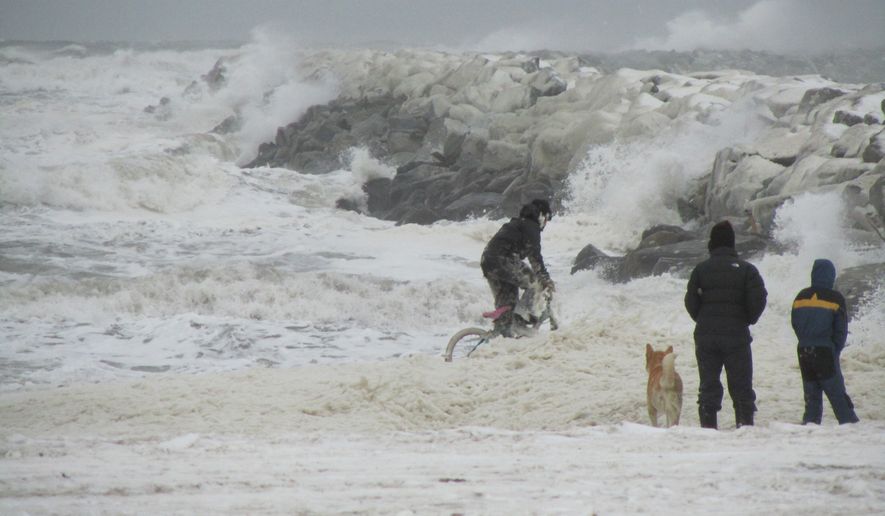ANCHORAGE, Alaska (AP) — One of the most powerful storms to hit western Alaska in nearly 40 years battered coastal communities Wednesday with snow and hurricane-force winds, forcing some residents to seek higher ground as it knocked out power and ripped up roofs.
As the storm churned in the Bering Sea, residents and emergency responders braced for a possible surge of sea water into coastal communities.
“People out there are used to extreme weather, but this is not a normal storm,” said Jeremy Zidek, a spokesman for the state’s emergency management agency. “This is of a magnitude that can be a storm of record, extremely dangerous, and the state is treating it as such.”
Water already has reached homes in at least four Eskimo villages, including Tununak and Kipnuk, state emergency managers said.
Mr. Zidek noted there have been no reports of injuries, and damage so far has been largely limited to blown-out windows and battered roofs. Hooper Bay and Tununak reported scattered power outages.
The highest wind gusts recorded — 89 mph — were at Wales at the western tip of the Seward Peninsula, said Bob Fischer, lead forecaster for the National Weather Service in Fairbanks.
In Nome — the biggest of the coastal communities with about 3,600 residents — wind gusted to 61 mph, Mr. Fischer said.
The storm knocked out power in the town for several hours before sunrise. Winds were expected to remain strong throughout Wednesday.
“Water was at the bases at a number of buildings but not in the homes yet,” Mr. Fischer said. Tides could reach 7 feet above normal, he said.
The height of snow and hurricane-force winds hit Nome at about 2 a.m., police spokesman Zane Brown said. Some roof damage to homes was reported, he said.
Residents along Front Street, which runs less than 100 feet from the sea wall that protects the historic gold-mining town from the Bering Sea, were asked to voluntarily evacuate Tuesday night. They stayed with friends on higher ground or at one of two shelters opened by the city at a recreation center and at the Nazarene church, he said.
Officials feared the lack of shore-fast sea ice would leave Nome and Eskimo villages sprinkled along the coast vulnerable to sea surges.
The last time forecasters saw something similar was in November 1974, when Nome took the brunt of another storm. The sea surge it created measured more than 13 feet, pushing beach driftwood above the level of the previous storm of its type in 1913.
The state was monitoring the storm closely and was ready to send help wherever needed and when it was possible, said Mr. Zidek, with the Alaska Division of Homeland Security and Emergency Management.
“Our number one priority is the safety of life in those communities,” Mr. Zidek said. He noted there have been no reports of toppled fuel tanks or toxic spills.
The state and emergency managers in the villages have long prepared for the powerful storms that batter Alaska’s western coast, holding twice-yearly meetings on dealing with emergencies. In the past few years, the state has held evacuation workshops as well, Mr. Zidek said.
A spokeswoman for the Coast Guard said early Wednesday it had received no calls from vessels seeking help from the storm.
Petty Officer 1st Class Sara Francis said the agency was assisting a 143-foot fishing boat with engine problems north of the Aleutian Islands but the Rebecca Irene’s troubles were unrelated to the storm. The vessel was operating Tuesday with two engines and one failed.
The cutter Sherman took 20 of the vessel’s 34 crewmen off the boat. Petty Officer Francis said a tug was expected to reach the Rebecca Irene on Wednesday morning. Weather had diminished to 2-foot waves and 4-foot swells.
Petty Officer Francis said the storm hit after most crab fishing had concluded.
“We’re kind of in a lull with a lot of the fisheries,” she said.
Associated Press writer Rachel D’Oro contributed to this report.




Please read our comment policy before commenting.